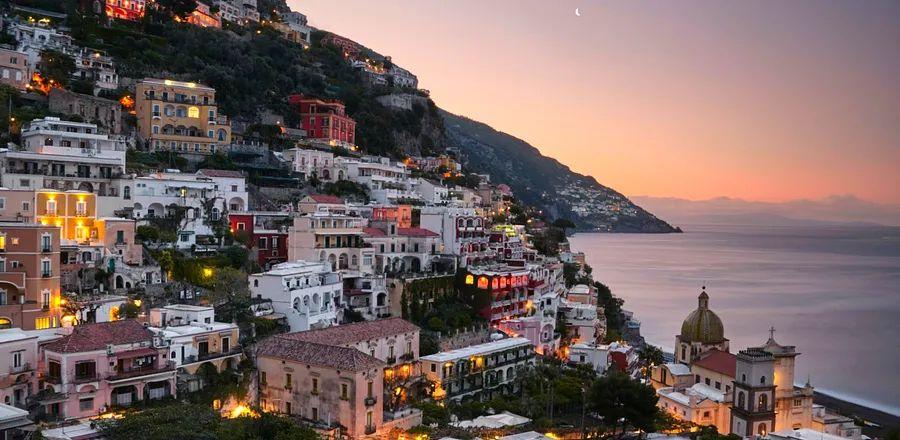An Airport Is Reopening in One of Italy’s Most Cherished Locations

After being closed for seven years, the historic Salerno Costa d’Amalfi Airport is set to reopen this summer as part of a major renovation and strategy to enhance access to the Cilento region and surrounding areas.
On July 11, Salerno Costa d’Amalfi will greet its first commercial flight, beginning with an arrival from the Spanish low-cost airline Volotea. Visitors to the Amalfi Coast can look forward to easier access to this UNESCO-designated area, with more international airlines and flights anticipated to join the growing list of carriers serving the airport.
“Symbolically, [the airport reopening] demonstrates how much southern Italy has evolved and is on the [rise],” says Danielle Oteri, founder of Feast Travel, a travel advisor well-versed in the Cilento area. Oteri points out that tourists still hesitate to explore parts of southern Italy beyond the Amalfi Coast, such as the Parco Nazionale di Cilento and other lesser-known beach spots. “The airport signifies that that era is long gone,” Oteri adds.
Situated 12 miles from Salerno, 28 miles from Amalfi, and 45 miles from Napoli, the Salerno Costa d’Amalfi Airport serves as more than just an alternative to Napoli-Capodichino Airport, the main gateway to southern Italy (which handles up to 12 million passengers annually). It’s an excellent option for travelers eager to discover the Campania region and southern Italy. Expect lighter crowds during its inaugural year before operations fully expand. Moreover, services will be more modern, cleaner, and efficient.

Image courtesy of Atelier Alfonso Femia
The Salerno airport is just a short drive from charming coastal towns such as Cetara, Ravello, Amalfi, and Positano, located along the famous Costiera Amalfitana (Amalfi Coast), which consistently ranks among Italy’s top destinations.
The reopening of Salerno Costa d’Amalfi Airport coincides with the growing popularity of the Amalfi Coast, which has attracted more visitors, luxury hotels, and rising prices. Salerno is located within the Cilento region, a vast area in southern Italy stretching from the coast to the Cilento mountains (including Cervati, Monte Stella, and Gelbison), featuring quaint villages, archaeological sites, and a variety of local delicacies, such as mozzarella di bufala, white figs, and olive oil with DOP (denominazione di origine protetta, protected designation of origin) or IGP (indicazione geografica protetta, protected geographical indication) status. In just one afternoon, you can savor the finest mozzarella in the world in Battipaglia, explore ancient temples in Paestum, and unwind with cocktails on the beach in Vietri sul Mare.
“Salerno serves as an excellent base for experiencing Italy's rich cultural and historical landscape,” states archaeologist Darius Arya. “From this location, you can immerse yourself in the stunning scenery and cultural heritage that dates back to Magna Graecia, including the archaeological parks of Paestum and Velia, as well as Cilento e Vallo di Diano National Park, the second largest in Italy, which extends from the coast to the mountain foothills. With Greek colonies, exquisite cuisine, and a breathtaking coastline, it's a remarkable and easily accessible adventure.”
Oteri states, “This represents a significant investment in the local economy.”
Initially opened in 1926 as a military airbase, Salerno Costa d’Amalfi has served various roles, including a flying school, a training center for carabinieri firefighters and parachutists, a private airport, and even briefly operated as a small commercial flight hub before permanently closing in 2016. One of the airport's hangars was crafted by the renowned Italian architect PierLuigi Nervi, a trailblazer of the early 20th-century rationalist design.

Image courtesy of Atelier Alfonso Femia
The 2024 redevelopment is part of a broader architectural and infrastructure initiative led by the Dutch engineering firm Deerns, in collaboration with the design studios of Alfonso Femia, Od’a Officina d’Architettura, Techproject, and Sun Flower Engineering.
The 170,000-square-foot terminal is designed with cutting-edge systems to cut CO₂ emissions by about 390 tons annually. It features a two-level modular frame organized around an open piazza, filled with natural light, greenery, and vibrant colors that harmonize with the surrounding landscape. The roof incorporates photovoltaic panels and A-frame peaks that echo the beach cabins dotting Italy’s coastline.
At a recent press conference, Alfonso Femia stated, “The terminal should seamlessly integrate into passengers’ journeys, marking both the beginning and end of their experience in the region.”
A 6,500-foot runway is already completed, and plans for a 7,200-foot extension are set for 2025. A new passenger terminal, general aviation terminal, and operational buildings are scheduled for 2026 and 2027, along with enhanced airport access, including a metro station and additional motorway connections. Currently, the airport is accessible via state roads and smaller routes.
In the next three years, the Salerno airport is expected to serve up to 3.3 million passengers, easing congestion at Naples Airport, with a future capacity of 5.5 million. In addition to Volotea, EasyJet and RyanAir are currently in negotiations to include this airport in their list of Italian destinations.

1

2

3

4

5
Evaluation :
5/5